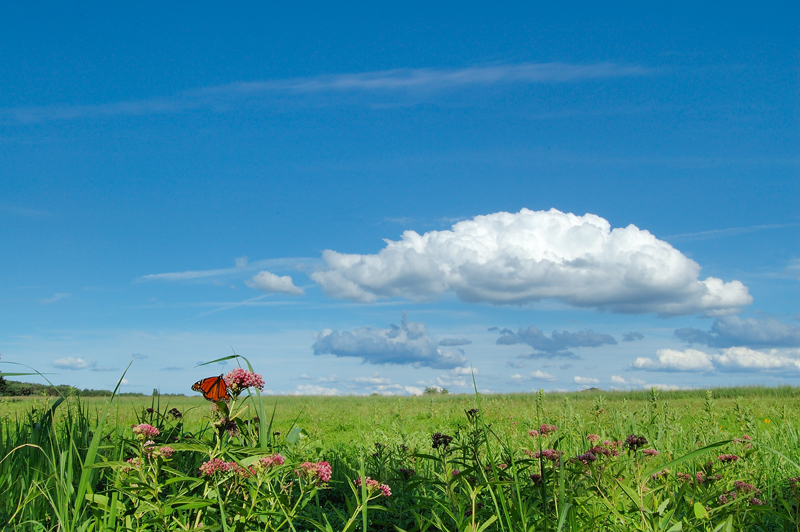Americans spend approximately $40 billion a year to maintain more than 32 million acres of lawn — an area roughly the size of Pennsylvania.
We pour 270 billion gallons of water per week on our lawns. We apply 10 times more fertilizer, herbicides and pesticides than farmers do to their crops.
And a typical gas lawn mower emits about the same quantity of volatile organic compounds in one hour as a car driven 350 miles.
Making meadows is a green alternative.
One benefit of allowing turf to evolve to meadow is the increased presence of pollinators. Many beneficial pollinators—bees, beetles, butterflies—are currently at risk from loss of habitat and pesticide use. This is especially troubling because pollinators are essential to the production of 75 percent of the staple crops that feed humans and for 90 percent of all flowering plants in the world.
Beneficial pollinators have very basic habitat requirements: flowers to forage, host plants for egg laying, and an environment free of pesticides. Grasslands and wildflower meadows offer these essentials in spades.

